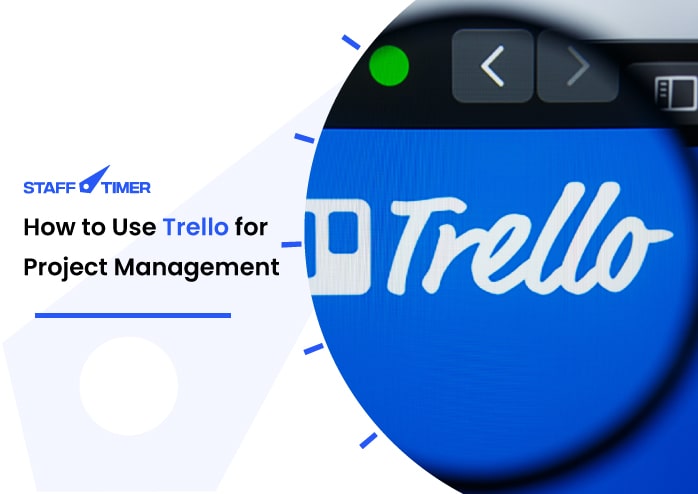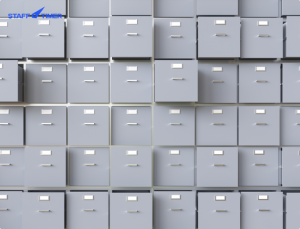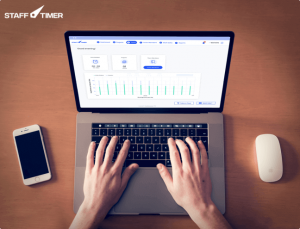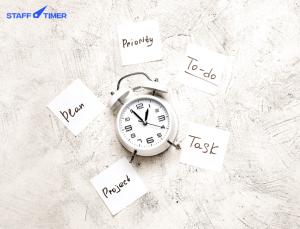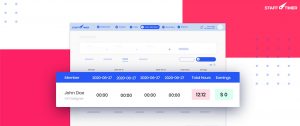How to Use Trello for Project Management
Managing a team has always been a very tricky job. However, there are some things that you can do to get the most out of your staff. Today we’re going to learn how to use Trello for project management. This tool can help us manage all kinds of job responsibilities and tasks, regardless of how many employees are a part of your team.
Now when we’re talking about responsibilities, we’re not talking about a daily to-do list. We’re talking about job roles or the type of things that you might find on a job description. So without any further ado, let’s get into it.
What is Trello?
In Trello’s own words:
“It’s a collaboration tool that gives you a visual overview of what is being worked on, who is working on it, and how far they’ve gotten.”
It’s essentially an online corkboard. It is used to organize “cards” into lists – these cards can be tasks, notes, projects, shared files, or anything else that can help you and your team collaborate better. The idea behind Trello is simple: effective team management needs full transparency over important tasks and flexibility to change or rearrange them if necessary.
Trello will provide you with more:
-
- Organization
- Cohesion
- Accountability
- Sanity
- Visualization
With Trello board at your disposal, you’ll be able to create order in your work by organizing it into a list of cards. You can quickly rearrange them if the situation asks for it. This makes it a great tool for team management, both in-house and remote.
Trello will solve the problem of:
-
- Long email threads
- Unproductive meetings
- Project clarification
- Transparency
- Absent-mindedness
If you’re using email or chat for task-based communication, Trello will prove to be a great replacement. Team members can learn all about a task just from reading a card. Plus, all discussions about a project can also take place right there. With all the information in one place, it becomes easier to:
-
- Keep everything on track
- Observe what is being done
- See previous chats
Anatomy of Trello
Trello consists of three main things:
-
- Boards: A Trello board is a big black space used to organize a project or process i.e. monthly tasks, department responsibilities, campaign launch plans
- Lists: Trello lists are items that make up a project i.e. to-do list, completed tasks
- Cards: Trello cards make up a list and contain further details about a specific item
How to use Trello for project management
The not-so-well-hidden secret behind Trello’s massive success is how quickly it allows its users to customize it according to their needs. However, this open secret is exactly why Trello can be a tad bit intimidating at first.
A blank Trello board can fill you with the exact same trepidation experienced when seeing a blank Word document. But where there is darkness, there is light.
We’ll teach you some of the best Trello practices out there. Soon you’ll be a Trello expert in no time, allowing you to effectively manage your in-house and remote teams.
Upload a Unique Background to Your Board
Don’t let that this simple practice deceive you into thinking that its just style with no substance.
Customizing your board is a productivity technique. How you may ask? Let us explain.
How many tabs do you open in your browser? We bet that you open a lot.
Simultaneously opening lots of tabs leads to inefficiency. These tabs are so small that you will need to open each one to remember what’s inside them. This is where custom Trello backgrounds come into play.
Even when the tabs are small, you’ll still be able to recognize the Trello boards as the app’s website icon will look like the design of a board’s custom background.
Be Clear About the Use of Your Boards
Before you make a board, be clear about its use. Don’t go crazy creating cards without creating a list first.
Also, be clear about the point of your board. Is it being used to store information or track progress?
A board consisting of information should have lists organized by topics.
But if you’re creating a board to track some process or someone’s progress, it’s better to define each list as a different stage in the cycle. As Trello reads from left to right, you should place the first stage list on the left and go from there.
Assign Big Projects Their Own Boards
Don’t cram multiple projects inside one board. That’s a recipe for disaster. It will inevitably overwhelm your team members result in bottlenecks, lack of accountability and slower projects.
To avoid cramming, create boards based on short-term projects and goals. An archive that project once it reaches its eventual conclusion. This will make it disappear from existence and you can concentrate on your next project.
Each Board’s Workflow Should Be Clear
Plan your board in advance. You should know:
-
- Where a card should go
- When a card is ready to be switched
- When a card is supposed to be archived
The workflow will not be smooth if your project isn’t planned in advance. To make things difficult, each team member will probably use the board in their own way.
So how can everyone stay on the same page? Well, you can make the first list of every board an “About Board”.
Don’t Forget to Use Trello with Another Tool
Trello is a great tool but there is no app in this world that can do everything. You need to use Trello with other tools like Google Docs and Microsoft Word.
For example, if a card represents an article that is completed, attach that article so that other members can easily view it.
Key Takeaways
Trello is a very powerful tool that can help you complete and collaborate on projects. It may look a little daunting at first but once you get a handle on the different functionalities, the app will make your life easier.
If you found this article helpful, feel free to share it with people who may not know about Trello and its amazing features!
Additional Business and Data Privacy Trends Resources:
Want to learn more about Business and Productivity trends,
Employee Monitoring Software: How it Benefits Data Privacy
Learn effective strategies regarding data privacy include. Companies need to use encryption in every bit of data, end to end.
How does stripe work:
Stripe is an excellent credit card processor for online-only businesses. If you have experience as a developer then it’s very fast and easy to implement.
